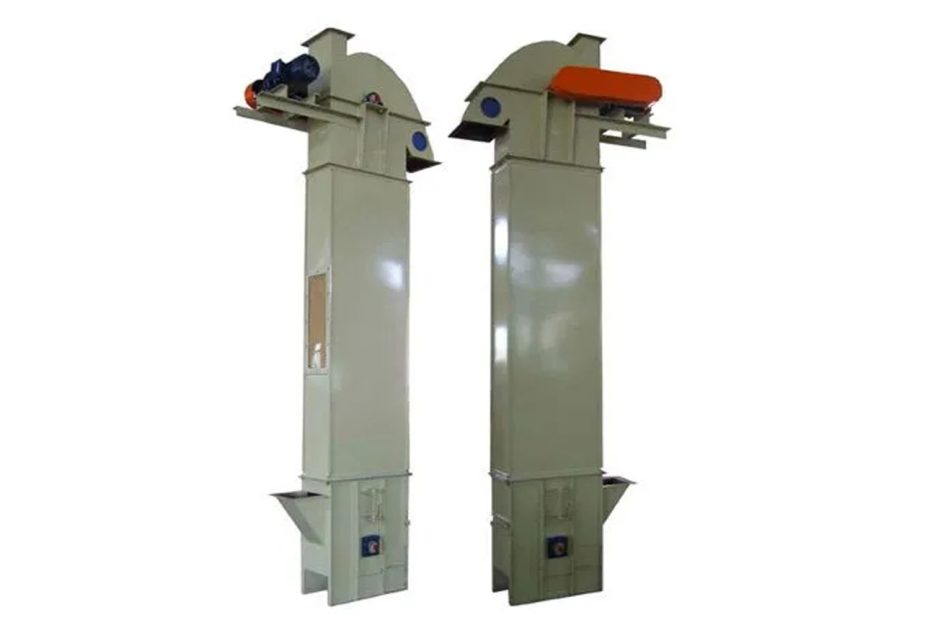Bucket elevators are essential machines in various industries, facilitating the vertical movement of bulk materials. However, inefficiencies in their operation can lead to reduced productivity and compromised product quality.
Sign 1: Reduced Running Speed
One prominent sign of bucket elevator inefficiency is when the running speed falls below the designed or planned rate. This reduction in speed is often a response to other problems, such as infeed issues or product spillage.
Sometimes, downstream equipment might struggle to handle the product flow at the planned rate, leading to the need for decreased speed. However, merely slowing down the elevator is not a viable solution, as it can result in yield losses and impact the overall process efficiency.
Solution: The key is to investigate and correct the root cause of the problem to restore the elevator to its planned rate. Addressing infeed problems, optimizing equipment design, and ensuring proper operating procedures can help maintain the desired running speed.
Sign 2: Yield Losses
Yield losses can manifest in two main forms when using a bucket elevator. Firstly, the quantity of product delivered to downstream equipment may decrease due to spillage or failure of some product to discharge from the buckets. Secondly, the quality of the product may be compromised during its movement through the elevator.
Solution: To combat yield losses, several factors need consideration:
- Preventing Spillage: Material spillage can be influenced by equipment design and operating procedures. Elevators designed with interlocking buckets are more effective at preventing spillage. Additionally, adjusting material feed rates and elevator speed to achieve optimal bucket fill is essential.
- Bucket Discharge Aid: Addressing failure of material to fully discharge from elevator buckets can be achieved using discharge aids such as “bucket knockers.” These devices dislodge material at the point of discharge, ensuring efficient emptying of the buckets.
- Surface Coatings: When conveying sticky materials that tend to adhere to bucket surfaces, using buckets with Teflon-coated or dimpled surfaces can reduce material buildup and improve discharge efficiency.
Sign 3: Excessive Wear and Damage
Inefficient bucket elevators may experience excessive wear and damage, leading to increased maintenance and downtime. Wear can occur on the bucket surfaces, elevator belt, and other components due to abrasive materials or improper handling.
Solution: Proper maintenance and material selection are critical in combating wear and damage
- Bucket Material: Selecting buckets made from wear-resistant materials can extend their lifespan and reduce maintenance requirements.
- Belt Selection: Choosing the appropriate elevator belt based on the material being conveyed is crucial to minimize wear and prevent damage.
- Regular Inspection: Implementing a maintenance schedule that includes regular inspections and timely replacement of worn-out components can prevent costly breakdowns.

Sign 4: Excessive Energy Consumption
Inefficient bucket elevators might consume more energy than necessary, increasing operational costs and environmental impact. Factors such as overloading, improper alignment, or lack of lubrication can contribute to higher energy consumption.
To optimize energy usage, consider the following:
- Load Management: Avoid overloading the elevator and ensure that it operates within its designed capacity.
- Proper Alignment: Properly aligning the elevator components reduces friction and energy losses.
- Lubrication: Regularly lubricate moving parts to reduce friction and improve energy efficiency.
Conclusion
In conclusion, identifying and addressing signs of bucket elevator inefficiency is crucial to maintaining optimal productivity and product quality. Reduced running speed, yield losses, excessive wear, and excessive energy consumption are common indicators that action is required.
By implementing the suggested solutions, industries can improve their material handling processes and ensure the smooth operation of bucket elevators, enhancing overall efficiency and reducing operational costs. Regular maintenance and adherence to best practices will keep bucket elevators running at their intended capacity, delivering optimal performance in various industrial applications.
